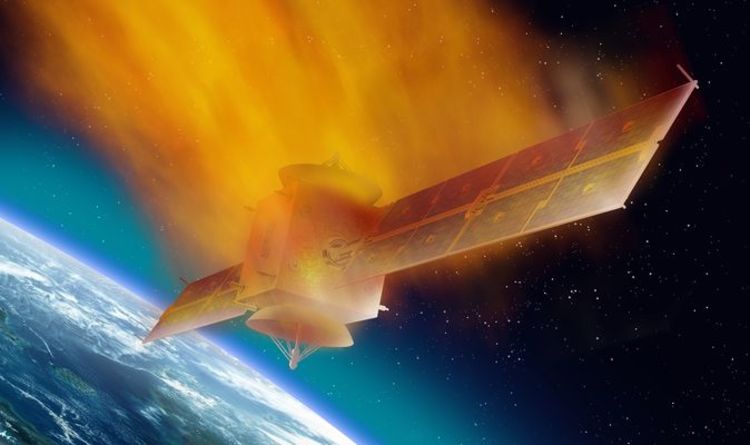Scientists from Kyoto University teamed up a forestry company in order to investigate how wood could be used in space. The aim is to prevent pollution in the upper atmosphere which occurs when conventional satellites burn up on re-entry.
Takao Doi, a former International Space Station astronaut, told the BBC his team are “very concerned” about the miniscule “alumina particles” that accumulate in Earth’s atmosphere when satellites return.
These particles can remain in the atmosphere for “many years,” he added. In contrast, the wooden satellites would allegedly burn up in a cleaner way.
The researchers are keeping the specific types of wood they are using a secret. Still, it is understood they are set to trial different types thanks to their partnership with Sumitomo Forestry.
However, some analysts have hit out at the reports. John Timmer, a reporter for tech news site Ars Technica, has claimed the wooden housing “won’t help” eliminate the issue of space junk.
Mr Timmer claimed the satellite housing only makes up “a fraction” of the material used in the satellite overall, and that other vital components such as boosters constitute “a lot of the junk” in space.
Elsewhere other analysts suggest wooden satellites could have benefits aside from ‘green’ re-entry incineration.
READ: US Space Force dismisses viral ‘Guardians’ of the galaxy outfit as fake
According to one estimate, there are almost 6,000 satellites orbiting the Earth currently.
Of these, most – roughly 60 percent – are no longer in use.
Figures released in August by the Union of Concerned Scientists claim the vast majority of operational satellites – 1,425 – belong to the US.
Many of the satellites operate in a LEO, or low-Earth orbit, configuration.
One concern about space pollution is that it potentially poses risks for objects in orbit.
Depending on the height of their orbit, satellites can travel at eye-watering speeds.
The lower their orbit, the faster they tend to go. The European Space Agency states satellites in low-Earth orbit generally travel around 17,000 miles per hour.
Due to the high speeds, a collision between two objects in orbit could cause significant damage.
Meanwhile, astronomers have pointed out another issue with space debris made worse by SpaceX’s Starlink satellite programme.
Elon Musk’s rocket firm aims to launch tens of thousands of the internet-beaming satellites into space in the coming years in order to provide worldwide internet coverage.
However, sky gazers have complained that the orbiting satellites are crowding the clear night-time sky, making it harder to peer at the stars uninterrupted.
SpaceX has responded by reconfiguring future models to reflect less sunlight, though concerns still remain, the Scientific American reported earlier this year.

Devoted web advocate. Bacon scholar. Internet lover. Passionate twitteraholic. Unable to type with boxing gloves on. Lifelong beer fanatic.





